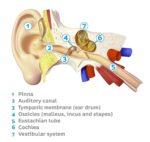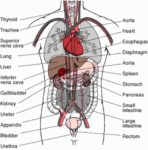Bipolar Disorder With Psychotic Features: Understanding the Complex Dance of Mood and Reality
Bipolar disorder, a serious mental illness, orchestrates a turbulent symphony of extreme mood swings. These emotional crescendos can include soaring heights of euphoria and plunging depths of despair. But for some, this disorder adds an even more dramatic twist: psychosis. Let’s delve into the intricate choreography of bipolar disorder with psychotic features.
## The Spectrum of Psychosis
Psychosis, like a mysterious veil, shrouds the minds of those affected by bipolar disorder. It exists on a spectrum, casting shadows of paranoia, delusions, and hallucinations. Imagine a canvas where reality blurs, where whispers become shouts, and where the ordinary morphs into the extraordinary.
## The Players: Delusions, Hallucinations, and Paranoia
1. Delusions: These are the mind’s elaborate fabricationsfalse beliefs that defy reason. Picture someone convinced they possess superhuman abilities or that unseen forces conspire against them. Delusions dance on the edge of reality, their choreography both captivating and disconcerting.
2. Hallucinations: The senses betray us. In bipolar psychosis, hallucinations take center stage. Visual specters materializea shadowy figure in the corner, a faceless whisperer. Auditory hallucinations echo through the mind, their voices both haunting and seductive.
3. Paranoia: Suspicion weaves its web. The world becomes a labyrinth of hidden agendas. Friends, family, even the televisioneach harbors secrets. Paranoia whispers, “They’re watching. They’re plotting.” The mind tiptoes along this treacherous edge.
## The Dance of Reality and Illusion
Psychosis pirouettes within the confines of manic or depressive episodes. As the curtain rises, behavioral changes signal its arrival:
– Difficulty Thinking Clearly: Logic stumbles, and the mind’s corridors twist. Thoughts collide like frantic dancers, their rhythm disrupted.
– Suspiciousness: Trust frays. Innocent gestures morph into sinister plots. The neighbor’s smile conceals a hidden agenda.
– Isolation: The spotlight narrows. The person retreats, seeking solace in solitude. Walls close in, and reality dims.
– Self-Care Fades: Hygiene wanes, self-neglect a silent overture. The mirror reflects a strangeran actor in their own tragedy.
– Sleep Alters: Dreams and nightmares entwine. The bed becomes a battleground, rest elusive.
– Intense Feelings: Emotions swell, threatening to burst the seams of sanity. Joy, rage, despairthey blur into a kaleidoscope.
– Communication Breaks Down: Words stumble, sentences fragment. The orchestra falters, notes discordant.
## Acts and Phases
1. Prodromal Phase: The overture begins. Behavioral shifts hint at impending psychosis. Reality wavers, like a mirage shimmering on the horizon.
2. Acute Phase: The crescendo. Delusions, hallucinations, and disorganized thoughts take center stage. The mind’s theater erupts in chaos.
3. Recovery: The denouement. Even as the storm subsides, faint echoes of psychosis linger. Reality tiptoes back, but scars remain.
## The Masks of Bipolar Psychosis
– Paranoid Whispers: “They’re out to get me.”
– Visions Unseen: Shadows dance, unseen by others.
– Incoherent Monologues: Words spill forth, a nonsensical soliloquy.
– Reality’s Frayed Edges: The boundary blurs, leaving the mind unmoored.
## Treatment and Hope
– Medication: Mood stabilizers and antipsychotics join the dance, tempering the wild choreography.
– Psychotherapy: Interpersonal rhythms, cognitive steps, and family-focused waltzes guide recovery.
– ECT and TMS: Electric currents and magnetic fields seek harmony in the brain’s symphony.
## Finale
Bipolar disorder with psychotic features is a complex balletone where mood and reality twirl, collide, and sometimes merge. Amidst the tumult, hope glimmersa spotlight on recovery, a chance to rewrite the script.
Remember, this dance has no final curtain call. But with skilled mental health professionals as partners, the steps become more manageable, the pirouettes less dizzying. ??
: [National Institute of Mental Health (NIMH)](https://www.nimh.nih.gov/health/topics/bipolar-disorder)
: [Verywell Health](https://www.verywellhealth.com/bipolar-psychosis-8426852)
: [Healthline](https://www.healthline.com/health/bipolar-disorder/severe-bipolar)
: [Bright



